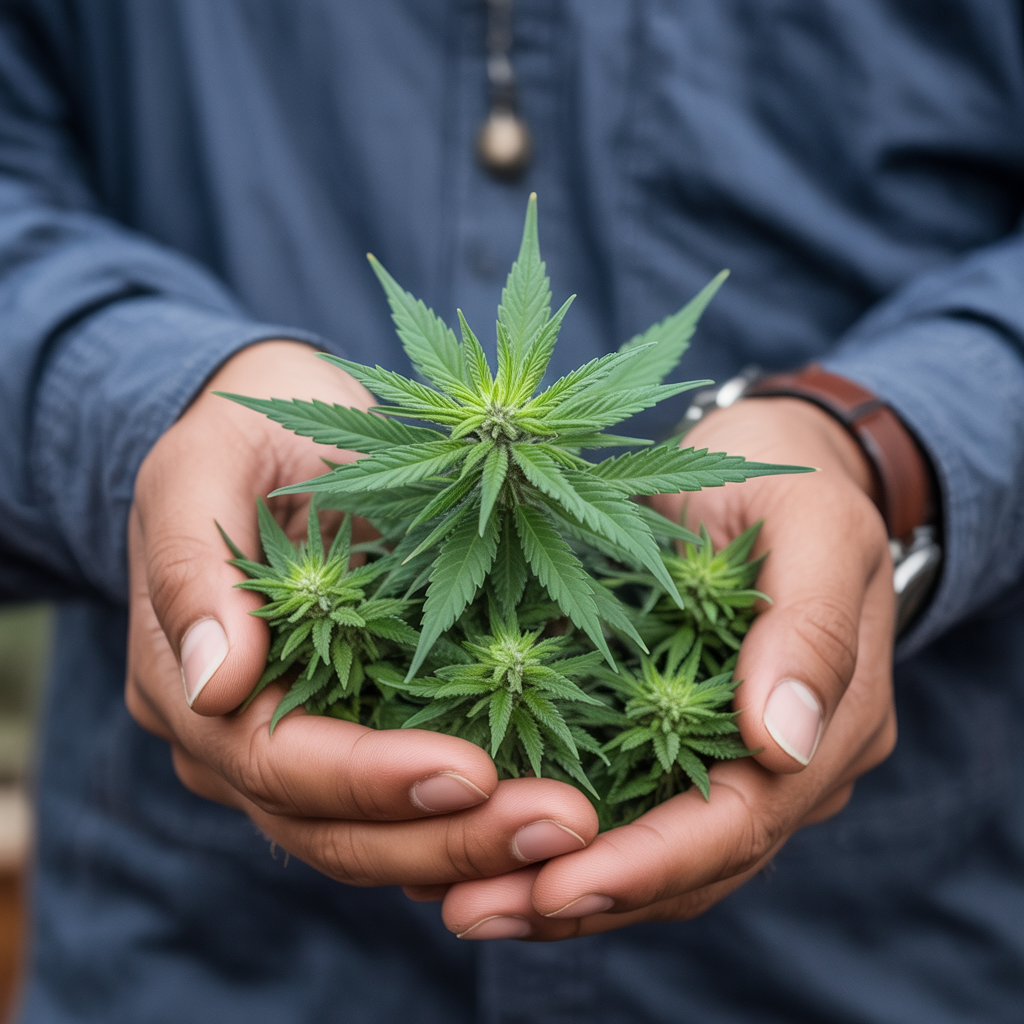A federal lawsuit over a San Bernardino County raid on sacred cannabis reignites national debate over Native American religious freedom and ceremonial plant use.
A federal lawsuit filed by a California branch of the Native American Church against San Bernardino County and its sheriff’s office has put the issue of religious freedom on trial—again. The case stems from a raid that resulted in the seizure of sacramental cannabis and other ceremonial plants used in Native rites. For the Church, these weren’t just seized goods. They were sacred objects. What law enforcement viewed as contraband was, in fact, consecration.
Now, in a courtroom far removed from the ceremonies disrupted that day, a judge will decide whether local officers violated federally protected spiritual rights—or if cannabis laws trump centuries of ceremonial tradition.
Cultural Roots and the Collision with Modern Law
The Native American Church is no stranger to legal scrutiny. Born from a fusion of traditional Indigenous spirituality and Christian teachings, it formed in resistance to colonial efforts that sought to erase tribal customs. Peyote is perhaps its most recognized sacrament, but the spiritual ecosystem it cultivates is far more expansive. For many of its branches, cannabis, sage, and other plant medicines are central to rites of healing, purification, and spiritual communion.
These practices are not symbolic gestures—they are embodied traditions. Rooted in land, breath, and botanicals, they’ve endured boarding schools, land theft, and federal criminalization campaigns. Yet in 2024, ceremonial use of cannabis can still be met with armed raids.
The San Bernardino incident echoes a long pattern of forced disruptions. According to the lawsuit, sheriff’s deputies entered the Church’s sacred property, executed a search, and confiscated religious materials—namely cannabis and other plants used during sacred rituals. No arrests. No trafficking allegations. Just ceremony interrupted, and sovereignty denied.
A Legal System Unfit for Sacred Protocols
At the heart of the Church’s lawsuit is a claim that federal religious freedom protections were violated. Their argument draws from the Religious Freedom Restoration Act (RFRA) and the First Amendment, both of which demand that government actions burdening religious practice must demonstrate a compelling state interest—and prove that the least restrictive means were used to achieve it.
In other words, even under the banner of enforcement, the state isn’t supposed to bulldoze spiritual traditions just because it can.
The seizure, plaintiffs argue, imposed a “substantial burden” on their religious exercise—terminology that carries weight in federal courts. That standard was tested in Oklevueha Native American Church v. Lynch (2016), when the Ninth Circuit ruled that cannabis prohibition did not violate RFRA because the plaintiffs failed to prove it was indispensable to their practice. That decision set a restrictive precedent—one this case will now test again.
Unlike Oklevueha, where cannabis was framed as an optional sacrament, the California Church insists the seized plants were essential to their ceremonies. Whether that distinction holds legal ground may shape the future of religious freedom protections for Indigenous communities.
Constitutional Contradictions and Cultural Blind Spots
This lawsuit also demands a deeper look at the fragility of constitutional rights when applied unevenly. On paper, the First Amendment guarantees religious liberty. In practice, however, it’s long been applied in ways that favor Western modes of worship while undermining Indigenous belief systems.
The 1978 American Indian Religious Freedom Act (AIRFA) was intended to remedy this disparity. It affirms that U.S. policy must protect Native spiritual practice, access to sacred sites, and possession of ceremonial objects. When President Jimmy Carter signed it into law, he acknowledged that “government agencies… have on occasion denied Native Americans access to particular sites and interfered with religious practices.”
Yet the law lacks enforcement mechanisms. It’s symbolic—declarative rather than directive. And when pitted against zoning ordinances, mining leases, or cannabis laws, it rarely wins.
Jurisdictional Strategy and Federal Court Positioning
Strategically, the Church’s legal team moved the case to the U.S. District Court for the Central District of California, a venue with authority to weigh federal religious freedom claims more broadly than a state court might. Federal jurisdiction not only reframes the conversation around constitutional rights—it amplifies the precedent-setting potential.
Observers from platforms like Law360 have flagged the case as one to watch, particularly because its outcome could influence how other courts interpret the limits and latitude of RFRA in cases involving controlled substances and ceremonial use.
At issue is not only whether RFRA applies, but how far its protections extend when Indigenous practices come into contact with drug enforcement regimes. The answer may affect more than just cannabis—it could reverberate through future litigation involving peyote, ayahuasca, and even land-based worship.
From Sacred Sites to Seized Sacraments
The San Bernardino case shares thematic resonance with Apache Stronghold v. United States, a dispute over Oak Flat—a sacred site threatened by copper mining. Despite fierce opposition from the San Carlos Apache, the Ninth Circuit ruled 6-5 in favor of the government, declining to halt the land transfer. The court reasoned that while the project may desecrate the site, it didn’t “coerce” the Apaches into violating their faith.
That logic is precisely what Native advocates fear will be applied to their ceremonies. As long as the government claims it isn’t forcing you to abandon your faith, the burden apparently isn’t “substantial.” This shallow interpretation of coercion leaves sacred land vulnerable to bulldozers and sacred rites open to SWAT raids.
Enforcement Without Understanding: The Policy Gap
This case also exposes a gaping policy failure. While some states now treat cannabis as a taxable commodity, tribal ceremonies involving the same plant remain under surveillance. That contradiction reveals the limitations of a regulatory model that centers commerce over culture.
To avoid future constitutional collisions, law enforcement needs a dramatic overhaul in cultural protocol. That includes mandatory training in Indigenous religious customs, better procedural guidelines for engaging with tribal communities, and a clear distinction between commercial drug enforcement and ceremonial use. Current protocols are too blunt to recognize sacred use and too rigid to flex in favor of Indigenous rights.
AIRFA mandates consultation between federal agencies and Native spiritual leaders—but that provision is rarely followed with intent. As a result, raids happen before questions are asked, and sacred items are lost before they’re understood.
What This Means for Religious Freedom
The broader implications of this case stretch well beyond California. A favorable ruling for the Church could reinforce that religious freedom is not conditional—especially not on whether the sacrament in question fits into a mainstream moral framework. It could encourage other Indigenous communities to assert their ceremonial rights with renewed legal confidence.
Conversely, a ruling in favor of the sheriff’s department would likely embolden further enforcement actions rooted in the same cultural illiteracy that sparked this one. It would narrow the already limited scope of RFRA for tribal communities and expose more ceremonies to the threat of interruption—or erasure.
Either way, this case will serve as a touchstone. Not only for cannabis law. Not only for RFRA. But for how the U.S. legal system understands the spiritual legitimacy of Indigenous life.
Where Rights End and Ritual Begins
This isn’t just a story about a raid. It’s a test of whether the United States is capable of respecting spiritual traditions it did not invent—and cannot fully understand. It’s a challenge to the selective enforcement of religious freedom, and to the quiet assumption that “real” religion wears a collar, not feathers.
In the end, the question isn’t whether the Church broke the law. It’s whether the law broke its promise.

***
GreenPharms is more than just a dispensary. We are a family-owned and operated company that cultivates, processes, and sells high-quality cannabis products in Arizona. Whether you are looking for medical or recreational marijuana, we have something for everyone. From flower, edibles, concentrates, and topicals, to accessories, apparel, and education, we offer a wide range of marijuana strains, products and services to suit your needs and preferences. Our friendly and knowledgeable staff are always ready to assist you and answer any questions you may have. Visit our dispensaries in Mesa and Flagstaff, or shop online and get your order delivered to your door. At GreenPharms, we are cultivating a different kind of care.
Follow us on social media





